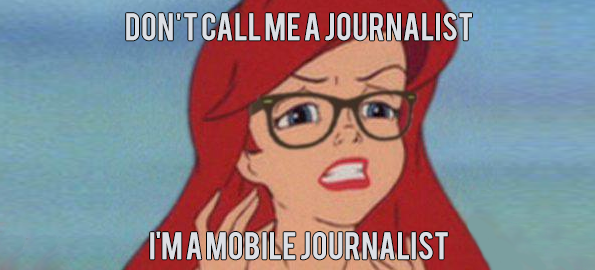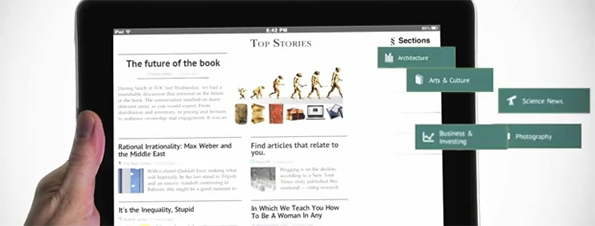by Vincenzo Marino – translated by Roberta Aiello
Newspapers which can make it
This week, a study by the Pew Center has highlighted the stories of four newspapers that, despite the well-known scenario of crisis, are able to reverse the trend and make a profit. The cases are exemplary for both the results and the models of response to the crisis and are different from sector to sector and from newspaper to newspaper. In a context where for every $1 newspapers gained in digital ad revenue, they were already losing $7 in print advertising, the actual ratio 16:1 is even more critical. These newspapers are the Naples Daily News (Florida), the Santa Rosa Press Democrat (California), the Columbia Daily Herald and the Deseret News (Utah). One of the most interesting case concerns Deseret, whose CEO Clark Gilbert took on the responsability of the digital section, working on the strength of his academic skills, having taught these subjects for years as a professor at Harvard Business School. Through his work, he created a kind of experiment in the field applying his knowledge to the publishing group.
His idea was to separate the digital ‘arm’ of the company from the traditional one. Following the metaphor of his colleague Clay Christensen in NiemanLab, for Gilbert the old paper business is like a crocodile, a creature in slow extinction but still able to survive, and the digital business is a new form of life (mammals), ready to dominate the future. They deserve to be dealt with separately, also from the point of view of advertising by helping advertisers to come together, step by step, towards new models of non-paper advertising. As for the results of his job: the newspaper is in good shape (an average circulation of 90,000 copies) and digital revenue growth of 44% since 2010.
According to the research data (here in the infographic), a detailed knowledge of the market would be essential today for the success of a publishing company. This was the backbone of the rebirth of the Naples Daily that took advantage of (small) sizes and average age (60 is more and more the target audience for newspapers) of the urban area where it is distributed, with revenue growth of 10% since 2009. The ability to explore new avenues, like the Columbia Daily did, is important, diversifying numerous digital products (estimates for this year: +15% compared to 2011). As Mathew Ingram suggests in PaidContent, there is a need to aim high and jump enthusiastically with very clear ideas, bravely defying failure.
The barging in of mobile journalism
The scenario appears to be radically changed by the sudden arrival of reading on mobile devices. If for the majority of people – often also for publishers – this is simply a different way of consuming the same product, as pointed out by Cory Bergman in Poynter this week, it is a disruptive innovation, a variable that can change the entire landscape fatally. It is a process comparable only to the transition from paper to the internet of the 90s. Unlike that process, which was mostly ‘suffered’, at most ridden, but not really tamed or fully understood, this one could be still understood and domesticated. Like a second chance – or worse, the last call – for the entire media industry.
Bergman has decided to establish a picture of the five reasons which should lead to confirm the similarity between the paper-internet and internet-mobile transitions. First, he warns that the adoption of rewritten and redesigned websites, according to the standards of responsive design (about which we have already spoken) would not be enough to embrace this ‘revolution’, based more on geolocation and digital payments (something more like Google: content, advertising and personalized services) and not on mere aesthetic adaptability and versatility of content distribution. The second point of the post advises us to keep in mind that the mobile will not surpass the desktop universe for years. It will continue to erode market segments and steal users and services from the old browser consultation – which happens more and more often, for example, to the Guardian or to websites such as Facebook and, of course, Google.
The third point reminds us not to forget that the decline of the ‘desktop’ will have a direct impact on advertising revenue, although the gap between desktop and mobile impression-cost is still quite large. The author suggests that there is a whole sector to work on, bearing in mind the examples of the above-mentioned Google and Facebook, which alone – offering a kind of ad different from the one always imagined by the publishing industry – account for almost 70 % of revenues from mobile advertising. The mobile first would also continue to appear as a field where one spends and invests more now. It is a trend to follow, reformulating the concept of reproduction and proposition of news, and the assumption of the fifth point. Much of the time spent on mobile devices would be dedicated to social networks (23% only for Facebook), which should lead one to imagine new information ecosystems, new products, new business models. New challenges, more like Flipboard than the disastrous The Daily.
Tablet journalism and social news readers
The market is without doubt more open and competitive than ever, says Eliza Kern in GigaOm. “The internet offers more than we can reasonably ingest” (the excess of supply that we talked about last week) and by combining ongoing consolidation and the use of social-style applications on mobile devices for finding and reading the news, it seems clear that a natural outlet could be yet more space for the so-called social news reader, tools to organize the reading in the chaos of information, adapting the needs and tastes of users and their contacts. The market already offers tools such as the aforementioned Flipboard, Zite, Prismatic, the new and upcoming Thirst, but public and industry are still waiting for the real ‘killer’ application, able to take advantage of portability, social relations and adaptability between reading “first” and “second screen”.
Today’s reality is ‘multi-screen’ and the desktop/laptop reading – using the words of Blodget in Business Insider – still largely dominates. Tablets and smartphones appear more and more often as means of consultation to combine with other media, as evidenced by the growth of the underlying “second screen application” battle between Facebook and Twitter – brought to light last week during the Super Bowl and confirmed by the acquisition of Bluefin Labs by the social network of San Francisco.
It is the beginning of the definition of tablet journalism, presented this week by Roy Greenslade in MediaGuardian, as the real future for the industry. Quoting John Meehan, the former editor of the Hull Daily Mail, Greenslade says that iPad and similar devices will continue to change the scenario by offering new reading experiences, new features, leading to different content and ricalibrated prices. “I believe the printed newspaper will survive, but I suspect for not more than 10 -15 years from now”, Greenslade explains, stating that the industry certainly cannot rely only on this type of product. “More people will read tablet equivalents”, he adds. In Italy, in 2012, more than two million tablets were sold – about 700,000 from October to December alone.
The “personal paywall”
An entire system needs redefining in order to generate profit and to shape products and services on the basis of the wishes of the users. This week, Mathew Ingram in PaidContent focuses on what could be the new winning variables of the so-called paywall (here the famous debate which we have already spoken about), starting from an original yardstick. After years of painful search, the music industry has perhaps found a satisfactory method of linking users and corporations; by understanding the real reasons which entice the listener to pay. It’s not the song, or the content itself, but the access to the artist that really counts. It’s a sort of ‘personal paywall’ which if applied to journalism could lead to some proposals – in this case five, listed by the author.
– The chance to read any author desired, on a subscription basis, in an all-in-one package, whatever the form is
– Guarantee to the subscribers advantages over other users, following the model of membership as already mentioned, and with an offer similar to that made to fan club music members, to ensure privileged access to special or unreleased content
– Be part of live events with authors, as happens in concerts
– Favour the creation of virtual communities with the presence of the author to add value and justify the expense of subscription
– Let the authors become ‘experts online’ under payment, answering questions on the issues which the readers consider them to be experts in
Summing up, a “personal paywall” with the key features being the personalization of the services offered and the right price.






